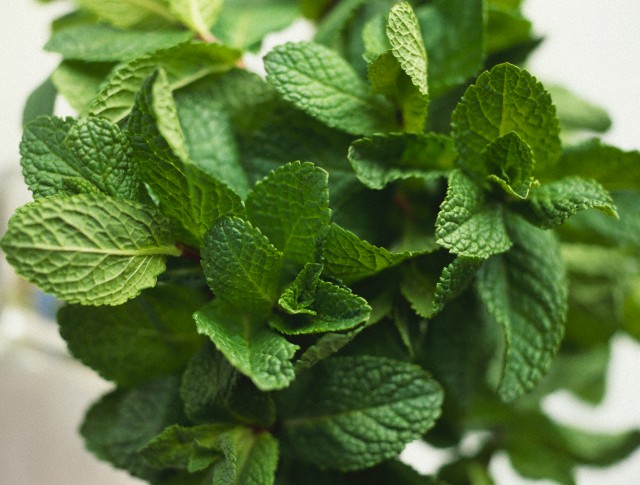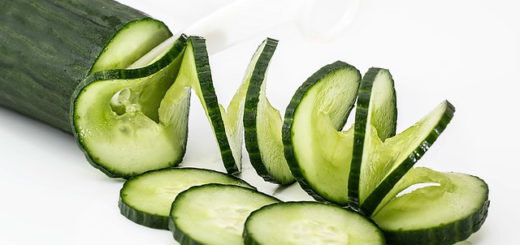Top Benefits of Peppermint Leaves for Skin, Face, Hair and Health
Peppermint is an herb that is very popular for the distinct aroma and medicinal value. The botanical name of the herb is Mentha piperita. The leaves are greenish purple in color and lance-shaped. The cool flavor is very refreshing and rejuvenates your senses. It is used in a number of products like mouthwashes, toothpastes, bath preparations, and ointments for the sharp menthol odor, cooling sensation, and refreshing aroma. Peppermint leaves also find use in cooking and adding flavor to beverages. They add flavor to drinks and water, and are also added to salads. Making peppermint tea or peppermint oil are other uses. The cooling effect of the leaves cools you down in summer months. The medicinal and therapeutic properties make it a much sought after herb. 
Peppermint Leaves Benefits and Uses for Skin and Face:
Skin Health:
Peppermint leaves contain nutrients that are capable of toning your skin, reducing swelling, minimizing pores, and also restoring the elasticity of your skin. They contain Vitamin A and Vitamin C, which fight inflammation. They are powerful antioxidants and get rid of the red marks on your skin. Vitamin B, riboflavin, and folate contained in these leaves do the job of brightening your complexion. You can also powder these leaves in sugar scrubs and produce an invigorating effect on your skin. It acts as an effective natural scrub.
Treat Skin Problems:
Topical creams contain peppermint leaves as a common ingredient to treat skin issues like rashes, hives, poison ivy, and poison oak. Applying these ointments soothe and heal your skin effectively.
Uses of Peppermint Leaves for your Hair growth:
Dandruff:
Make a strong tea with peppermint leaves and nettle leaves. Use this to rinse your hair. It helps in getting rid of dandruff and clears your scalp. It soothes your scalp and promotes the growth of healthy and beautiful hair.
Head Lice:
Peppermint leaves can treat the infestation of lice on your hair and scalp. It has antibacterial properties which make the extract very useful in ridding lice.
Medicinal Uses of Peppermint Leaves for your Health:
Anti-bacterial Properties:
The growth of helicobacter pylori, salmonella enteritidis, methicillin-resitant Staphylococcus aureus (MRSA), and other kinds of bacteria can be stopped if you use peppermint leaves. The growth of some types of fungus is also inhibited. Infantile colic is also treated effectively by using peppermint leaves.
Better Memory:
Peppermint leaves have a strong aroma that can enhance your memory and increase your mental alertness by soothing and calming your nervous system.
Bad Breath:
The cool and refreshing aroma of peppermint leaf extract is a very useful remedy for bad breath. It can be used as a superior substitute for chlorhexidine, the mouthwash chemical which is used for getting rid of bad breath. In the middle ages, powdered peppermint leaves were used for whitening the teeth and treating halitosis. Chewing some peppermint leaves itself is enough for giving the effect of a mouth freshener.
Cancer:
A phytonutrient contained in peppermint leaves has been found to stop the growth of cancerous tumors in the liver, mammary glands, and pancreas. As such, it is capable of protecting your colon, lungs, and skin against cancers. The menthol contained in the leaves inhibits the growth of prostate cancers.
Cold and Flu:
Bacteria and viruses are killed with peppermint leaves. They contain menthol, which eliminated phlegm and thins mucus. As such, you get relief from congestion and coughs. Rubs use menthol as a common ingredient to use on the chest and get relief from chest aches caused due to cold and flu. It has a calming and numbing effect which treats the problems.
Fever:
Adding peppermint leaves to your bath water or consuming peppermint tea helps bring down your fever. It does this gently without the need of any medicines. Moreover, it has no adverse effects on the ability of your body to fight illness.
Liver Function:
Peppermint leaves have the capacity to improve the bile flow from the live to the gall bladder. As such, it improves the functioning of your liver. You can use fresh or dried leaves for this purpose. It aids in better digestion by breaking down the fats and reducing the level of bad cholesterol in your body. Reduction in the cholesterol level reduces the strain on the liver and cures sluggish liver. The leaves also soothe and calm down your digestive system. Symptoms of irritable bowel syndrome like dyspepsia, indigestion, and colonial muscle spasms are all relieved.
Respiratory Problems:
The rosemarinic acid in peppermint leaves benefits people suffering from asthma. The antioxidant properties in them help in neutralizing the free radicals and block the production of leukotrienes, which are pro-inflammatory chemicals. The making of prostacyclins is also facilitated. This makes sure your airways are kept open so that you can breathe easily. The release of histamine is inhibited by the extract of peppermint leaves. As such, the symptoms of allergic rhinitis, or hay fever, are alleviated.
Other Benefits of Mint Leaves:
Muscle spasms are relieved, blood circulation is increased, pain is reduced, and sweating is promoted by the aromatic compounds in the peppermint leaves. The astringent compounds in them shrink inflamed tissues. You can use peppermint leaves for a number of other uses as well, like curing mouth sores, loss of appetite, nausea, dysmenorrheal, muscle cramps, and motion sickness. The leaves contain lots of calcium, potassium, manganese, magnesium, and iron. Potassium is very important for your cells and body fluids that control the blood pressure and heart rate. Manganese works as a cofactor with copper for superoxide-dismutase, an antioxidant enzyme.
So, now you see how useful peppermint leaves can prove to be for you. Use them in the best way possible and make use of all the benefits.




Thank you. This peppermint seems wonderful. Do you know if it grows is west Africa